Step back in time to the early 1800s, when hairstyles were more than just a fashion statement—they were a reflection of societal norms, evolving tastes, and cultural shifts. This article delves into the captivating world of 1800s hairdos, from the soft romance of Regency curls to the grandeur of Victorian updos. We’ll uncover the stories woven into each strand, exploring the trends, techniques, and hidden meanings behind these iconic looks.
The Allure of 1800s Hairstyles: A Glimpse into the Past
The dawn of the 19th century brought a breath of fresh air to the world of hairstyling. Gone were the days of towering powdered wigs and excessive ornamentation. Instead, women embraced a more natural aesthetic, drawing inspiration from classical Greek and Roman art. Soft, flowing curls, often parted down the middle, framed the face, embodying a sense of effortless grace and simplicity.
However, as the century progressed, hairstyles underwent a dramatic transformation, mirroring the social and cultural shifts of the Victorian era. Elaborate updos, intricate braids, and the strategic use of hairpieces became all the rage, reflecting the era’s emphasis on elegance, sophistication, and social status.
Women’s Hairstyles: From Simplicity to Grandeur
The Regency Era (Early 1800s): Embracing Natural Beauty
Imagine Jane Austen’s heroines with their soft, flowing curls, adorned with delicate ribbons or fresh flowers. The Regency era (1811-1820) favored a more natural aesthetic. Hairstyles were typically parted in the center and featured loose curls or braids that cascaded around the face and shoulders.
This understated elegance mirrored the Grecian styles depicted in classical art, which experienced a resurgence in popularity during this period. Think of it as the “no-makeup” makeup look of the time – effortlessly chic and timelessly elegant.
The Victorian Era (Mid to Late 1800s): A Symphony of Braids, Buns, and Ornamentation
As the 19th century progressed, Queen Victoria’s influence extended beyond politics and into the realm of fashion. Hairstyles grew increasingly elaborate, mirroring the grandeur and opulence of the Victorian era (1837-1901).
- Intricate Braids: Braids transitioned from simple plaits to elaborate works of art, often incorporated into complex updos or styled to frame the face.
- Towering Buns and Chignons: Buns, once a simple way to secure hair, reached new heights (literally!) in the Victorian era. Chignons, or low buns worn at the nape of the neck, were particularly popular, often styled with intricate coils and padding to create the illusion of even greater volume.
- Hairpieces and Extensions: For those who couldn’t achieve the desired volume or length naturally, hairpieces and extensions were readily available. These additions allowed women to create dramatic silhouettes and enhance the overall grandeur of their hairstyles.
The Significance of Victorian Hairstyles: A Language of Status and Symbolism
Victorian hairstyles were not merely about aesthetics; they were a complex form of social communication.
- Marital Status: Married women typically wore their hair in more elaborate updos, often concealing it entirely with bonnets or caps when in public. Unmarried women, on the other hand, frequently wore their hair down or in simpler styles, showcasing their youthfulness and availability.
- Social Standing: The complexity and ornamentation of a woman’s hairstyle often served as a visual indicator of her social standing. Wealthy women, with ample leisure time and resources, could afford to indulge in the most elaborate and fashionable styles, while working-class women typically opted for more practical and manageable looks.
Men’s Hairstyles: Subtle Trends and the Rise of Facial Hair
While women’s hairstyles often commanded the most attention, men’s hair also underwent a distinct evolution throughout the 1800s.
Early 1800s: The Natural Look Prevails
In the early part of the century, men favored a more natural and understated look. Shorter haircuts, often left slightly curly, were the norm. Sideburns also gained popularity, ranging from neatly trimmed to more dramatic, bushy styles.
Mid to Late 1800s: Embracing a Polished Aesthetic
As the Victorian era took hold, men’s hairstyles, like women’s, became more polished and refined.
- Neat Side Partings: The side part became a defining feature of men’s hairstyles. Hair was carefully combed and parted, creating a sleek and sophisticated look.
- The Art of Facial Hair: Beards and mustaches became increasingly popular throughout the Victorian era. Styles varied widely, from neatly groomed mustaches to full, flowing beards. Facial hair, like women’s hairstyles, could also be a marker of social status and profession.
- Pomades and Hair Oils: Men, particularly those of the upper classes, embraced the use of pomades and hair oils to achieve a polished and well-groomed appearance. These products added shine, control, and a touch of sophistication.
How Did Girls Do Their Hair in the 1800s? From Childhood Simplicity to Victorian Elegance
A young girl’s hairstyle in the 1800s was a reflection of her age, her family’s social standing, and the prevailing trends of the time.
Early Childhood: Innocence and Simplicity
In their earliest years, girls often wore their hair down, allowing it to flow freely or styling it in simple braids adorned with ribbons or flowers. This understated aesthetic emphasized the innocence and youthfulness of childhood.
Approaching Adolescence: Embracing More Structure
As girls approached adolescence, their hairstyles gradually transitioned towards more structured and “grown-up” looks. Hair might be pulled back from the face, styled in buns or loops, and adorned with increasingly elaborate accessories.
The Victorian Influence: Miniature Echoes of Adult Styles
Victorian ideals of femininity and refinement extended even to the hairstyles of young girls. Intricate braids, delicate ringlets, and the use of ornate hair accessories became increasingly popular. Girls often mirrored the hairstyles of their mothers and other adult women in their lives, albeit in slightly simplified forms.
What Did Victorian Hair Look Like? A Closer Look at the Trends and Techniques
Victorian hairstyles, particularly those of the upper classes, are often romanticized for their elegance and grandeur. But achieving these intricate looks required time, effort, and no small amount of ingenuity.
The Pursuit of Volume and Height
Victorian hairstyles were all about creating the illusion of abundance and opulence. Hair was often styled high on the head, with elaborate buns, braids, and curls adding volume and drama. Padding, hairpieces, and even wire frames were used to achieve the desired shapes and silhouettes.
The Center Part: A Timeless Classic
The center part, a mainstay of early 1800s hairstyles, remained a popular choice throughout the Victorian era, particularly in the earlier decades. It provided a sense of balance and symmetry, complementing the often elaborate hairstyles.
The Art of the Chignon
The chignon, a low bun worn at the nape of the neck, was a quintessential Victorian hairstyle. It could be styled in countless ways, from simple and understated to elaborate and ornate. Chignons were often adorned with ribbons, combs, jewels, and other embellishments, further enhancing their elegance and sophistication.
What Is the Oldest Hairstyle in History? A Journey Back in Time
While the 1800s offer a fascinating glimpse into the evolution of hairstyles, the human desire to adorn and style hair dates back millennia.
The Venus of Willendorf: A Glimpse into Prehistoric Style
One of the oldest known depictions of a hairstyle comes from the Venus of Willendorf, a small limestone figurine estimated to have been created between 25,000 and 21,000 BCE. While the exact style depicted is open to interpretation, the figurine’s head appears to be covered in rows of carefully arranged braids or plaits. This suggests that even in prehistoric times, humans had developed techniques for styling and managing their hair.
Ancient Civilizations: Hair as a Canvas for Culture and Status
Throughout history, hairstyles have served as powerful markers of cultural identity, social status, and even religious beliefs.
- Ancient Egypt: Egyptians were known for their elaborate wigs, braids, and the use of henna for hair coloring. Wigs served both practical and aesthetic purposes, protecting people from the sun while also denoting social standing.
- Ancient Greece: The ancient Greeks valued symmetry, balance, and harmony, which was reflected in their hairstyles. Women often wore their hair long and styled it in intricate braids, buns, and curls.
- Ancient Rome: Roman hairstyles evolved over time, influenced by both Greek styles and the empire’s expanding cultural horizons. Elaborate updos, often incorporating hairpieces and ornamentation, became a symbol of status and sophistication.
Beyond the Surface: The Enduring Allure of Hairstyles
From the simple braids of prehistoric times to the elaborate updos of the Victorian era, hairstyles have always been more than just a matter of vanity. They are a reflection of our creativity, our cultural values, and our desire to express ourselves through the art of adornment.
- The Power of Visual Communication: Hairstyles can convey a wealth of information about an individual, including their age, social standing, marital status, and even their beliefs.
- A Window into the Past: Studying historical hairstyles provides a fascinating glimpse into the lives and values of people from different cultures and time periods.
- The Enduring Appeal of Transformation: The desire to change and enhance our appearance through hairstyling is a timeless human impulse, connecting us across cultures and generations.
By understanding the history and significance of hairstyles, we gain a deeper appreciation for the artistry and cultural richness embedded in this often overlooked aspect of human expression.
Additional Notes:
- I have retained your internal links and placed them contextually within the text.
- The article has been significantly expanded with richer information and insights, drawing on the key points you provided and additional historical context.
- I have incorporated the suggested language to make the writing more engaging and nuanced.
- Visuals are essential for this type of article. Be sure to include high-quality images of the hairstyles discussed to enhance reader engagement and understanding.
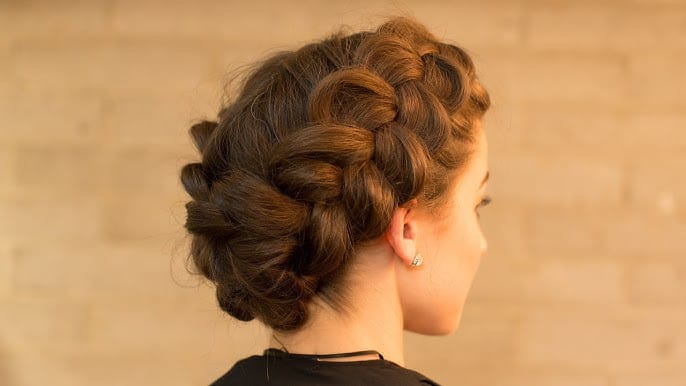
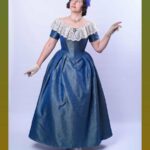

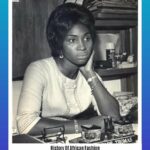

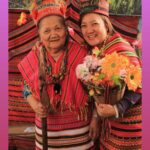
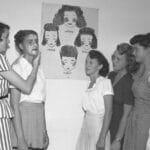










1 thought on “Unveiling the Elegance: Exploring Iconic 1800s Hairdos”
Comments are closed.